A basic fact is that, in the wilderness of most provinces in China, it is hard to find pangolins, and we clearly know that this exactly reflects the ongoing process of extinction. That is, we are experiencing the extinguishing of the species of pangolins. Should serious protective measures not be taken effectively, it would soon be that all the species of pangolins, except for the Chinese pangolin, will disappear from the Earth. This can impose a huge hinderance onto our construction of ecological civilization and green development.
In several replies and media statements from the Forestry Department of Guangxi Zhuang Autonomous Region, Malayan pangolins have been claimed as being exotic. However, our research shows that Malayan pangolins are not exotic species.
When referring to “the Act of Wild Animals Protection”, Article No. 3 in the Guilin Letter [2017] File No. 929 claims that Malayan pangolins are wild animal species introduced from abroad.
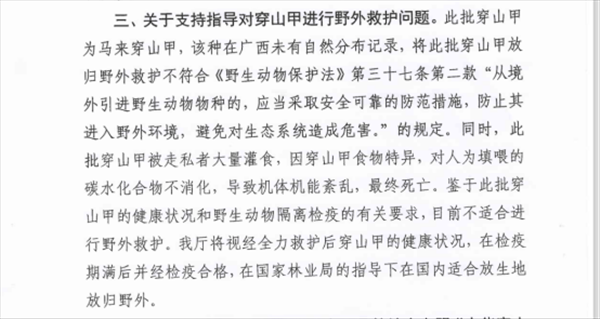
Guilin Letter [2017] No. 929) The third article quoted the "Wild Protection Law" as saying that Malay pangolin is a wild animal species introduced from abroad. (Photo: CBCGDF)
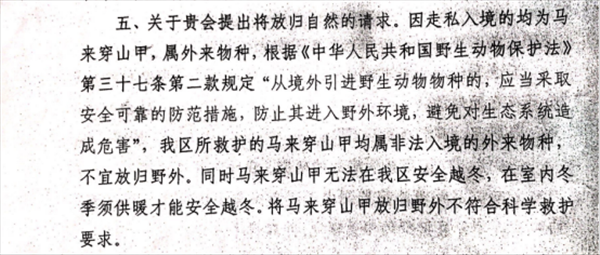
Guilin Letter [2018] 645 No. 5 said that Malay pangolins are all exotic species. (Photo: CBCGDF)

On September 12, 2017, Guangxi Forestry Subsidiary Center said in an interview with Southern Weekend that Malay pangolins belong to exotic species. (Photo: CBCGDF)

On August 6, 2018, the ambulance center of Guangxi Forestry Department held a press conference and still introduced to the Nanguo Morning Post that Malay pangolins are exotic species. (Photo: CBCGDF)
Another interesting fact is that, in the article “The Pregnancy Period of Malayan Pangolins in Captivity” jointly published by the Department of Forestry of Guangxi Zhuang Autonomous Region and Guangxi Academy of Forestry, it is acknowledged and cited that “Malayan pangolins (Manis javanica) are mainly distributed in Southeast Asia including countries like Malaysia, Indonesia, the Philippines, Vietnam, Laos and Thailand, and they can also be found in Southern Yunnan, China (Wu Shibao et al. 2005)”.
It is also very interesting that the Guangxi Department of Forestry and the Guangxi Academy of Forestry have published the article "Pregnant Malay Pangolin Pregnancy", which recognizes and cites "Manis javanica" mainly distributed in Malaysia, Indonesia, Philippines, Vietnam. Southeast Asian countries such as Laos and Thailand are also distributed in southern Yunnan (Wu Shibao et al. 2005).
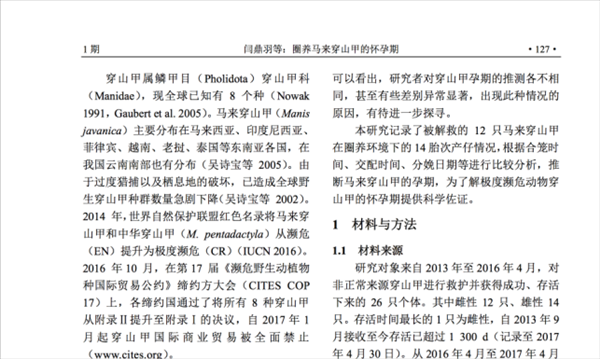
(Photo: CBCGDF)
But are Malayan pangolins really exotic? Let us explain some science about pangolins:
Malayan pangolins, also called Manis javanica, are mainly distributed in the Indochina Peninsula, Malayan Peninsula, Indonesia and Southern Yunnan in China.
In October, 2003, the Chinese Academy of Sciences and the Kunming Institute of Zoology sampled the live specimen of 5 Malayan pangolins in the Meng Lian Dai La Hu autonomous county of Southern Yunnan (located in the southwest of Yunnan province, and is an autonomous county under the jurisdiction of Pu’er city).
In April, 2004, Wang Yingxiang, Feng Qing and others, when on a field trip in the Xishuangbanna natural reserve, discovered two Malayan pangolins in the collection of specimens owned by the natural reserve.
References
From the literature, we can see that Malayan pangolins are in fact native to China rather than being invasive species. As a result, they can be reintroduced into the wild and re-extradited in China.
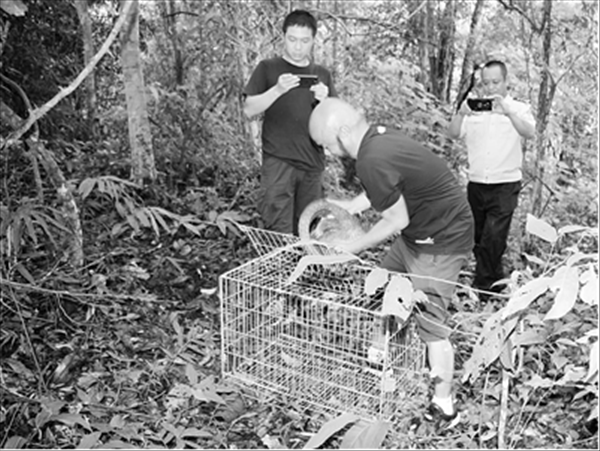
Then on May 20, 2015, the article “China’s Red List of Biodiversity — Volume of Vertebrates” jointly compiled by the Ministry of Environmental Protection and the Chinese Academy of Sciences was published, and it recorded Malayan pangolins as one of the species. But because of insufficient data, Malayan pangolins only received a grade rating of DD.

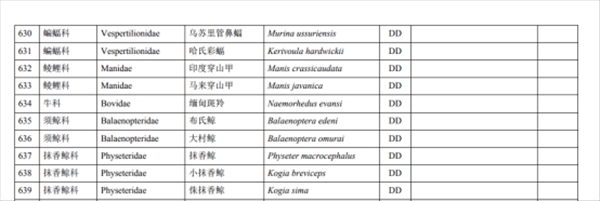
(Photo: CBCGDF)
Similarly, the international organization IUCN, the nonprofitable environmental protection organization with the longest history, the largest scale, and the only one permanent observer status for the UN General Assembly on Environmental Protection and Sustainable Development, also mentioned south China in its description of the distribution area of Malayan pangolins.
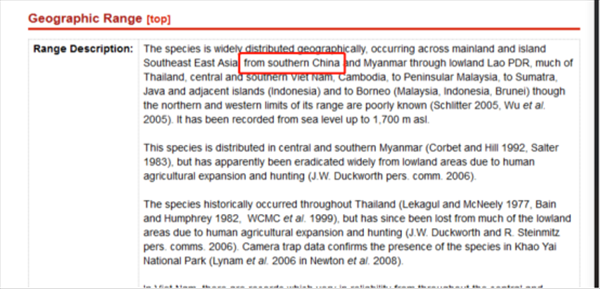
(Photo: CBCGDF)
Then can we boldly presume that the Forestry Department of Guangxi Zhuang Autonomous Region decided Malayan pangolins as being exotic and unsuitable for being released into the wild purely because of there being the word “Malayan” in their name? And among the batches of pangolins having been tamed and bred, there has been no successful case of breeding in China so far. Regarding this, it there any difference between “save and rescue” and disguised killing? Therefore, why do the Forestry Department of Guangxi Zhuang Autonomous Region lag when other southern provinces are presently advocating and actually implementing the releasing of rescued pangolins into the wild?
Original Chines article:
http://www.cbcgdf.org/NewsShow/4854/6269.html
By / Lu Lei
